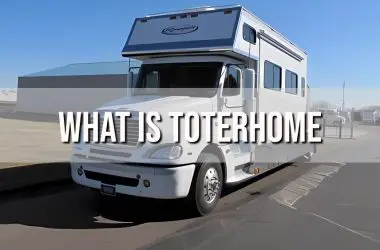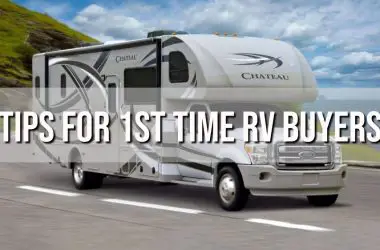What is Small Class A Motorhomes? Small Class A motorhomes, sometimes called compact or short Class A RVs, refer to the smallest models within the Class A category. Class A motorhomes are the largest type of RV, typically measuring from 26-45 feet long. Small Class As represent shorter models that maximize amenities in a condensed footprint.
While full-size Class A motorhomes focus on expansive living space, small Class A RVs prioritize ease of handling, driving and parking. Their nimble sizes open adventuring opportunities for couples or solo travelers. Clever interior designs allow comfortable full-time living as well. For RV lovers wanting supreme luxury without extreme length, small Class A motorhomes deserve a look.
Key Takeaways
- Small Class A RVs are the most compact models in the Class A category, usually under 30 feet.
- Benefits include better maneuverability, efficiency and luxury features.
- Choosing the right floorplan, chassis and features are important for livability.
- Regular maintenance helps uphold performance and value.
- Small Class A motorhomes offer a balance of luxury and practicality.
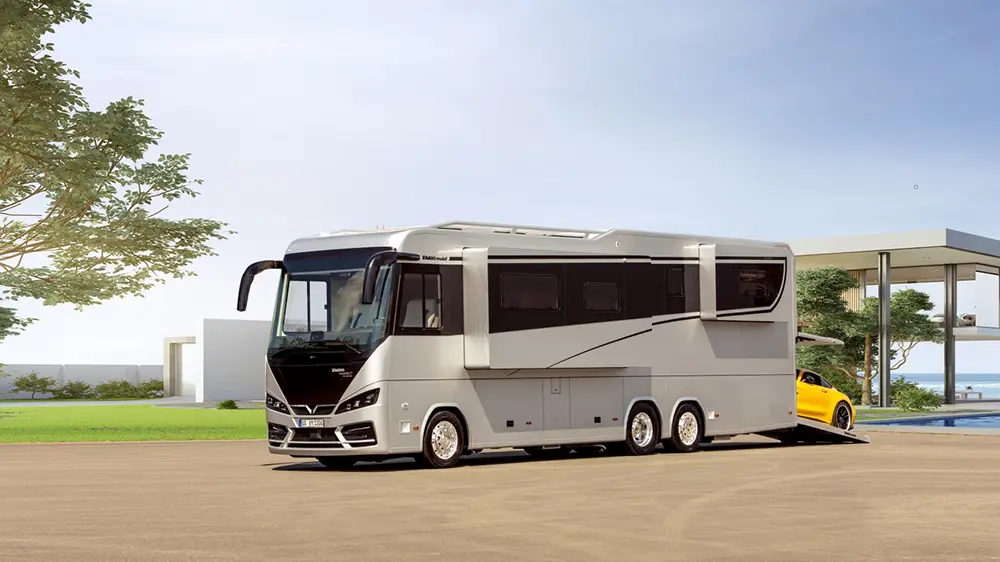
What are Small Class A Motorhomes?
Class A motorhomes represent the largest RV category, providing hotel-like accommodations for road travel. The defining features are a flat-front cabover design based on a bus or truck chassis. Class A RVs are fully self-contained with bedroom, kitchen, bath and living areas.
Traditional Class A motorhomes span 26-45 feet. Smaller Class A models offer condensed versions with all the perks. The RV Industry Association considers Class A RVs under 30 feet long to be “small” Class A motorhomes. However, coaches under 25 or even 27 feet can also provide compact usability.
With shortened wheelbases, smaller Class A RVs can fit in tighter campsites and navigate twisty mountain roads. But their well-designed cabins still include full bathrooms, spacious galleys, king beds and ample storage. High-end fixtures and luxuries carry over to create miniature mansions on wheels.
For couples or singles ready to upgrade to a Class A but intimidated by huge sizes, small Class As provide the ideal compromise. Their functionality and flexibility helps RVers realize the Class A dream on a smaller scale.
Benefits of Small Class A Motorhomes
Though small in stature, petite Class A motorhomes offer great advantages:
Easier Navigation
The most obvious benefit is an easier time maneuvering and parking shorter RVs. Shorter wheelbases allow tighter turning radiuses. Backing into spots is less stressful without a stretched rear overhang. Wind gusts have less lever effect on a compact profile.
Many small Class As dip under the 30-foot mark which permits access to RV resorts or campsites imposing length limits. Driveway access is less problematic without extreme length. Meandering remote mountain roads become less intimidating routes.
In the hands of an experienced driver, even large Class As can be managed well. But a smaller unit inherently provides greater confidence and convenience getting around.
Comfort and Luxury
While condensed in size, small Class A motorhomes retain the upscale amenities and quality materials the category is known for. Multiple slide-outs, swivel cab seats, and skylights prevent a confining feeling.
Residential appliances like dishwashers and full-size refrigerators allow comfortable extended stays. Many include a washer/dryer. Theater seating and electric fireplaces make cozy lounge areas. King-sized beds with high-end mattresses ensure restful sleeps.
Creative storage solutions like drop-down compartments and expandable sections maximize available space. With clever layouts, finishings and features, small Class As live comparably larger.
Efficiency
The trimmed dimensions naturally create lighter weights and improved fuel economy. Smaller motors generating sufficient power helps efficiency. Careful weight distribution also enhances stability and handling.
Limited space encourages loading only essentials. Carrying less weight reduces wear on vehicle components too. Streamlined exteriors with fewer protruding parts enhance aerodynamics as well.
The shorter chassis allows manufacturers to calibrate suspension, steering, and braking systems for responsiveness. Maneuvering a compact Class A RV soon becomes second nature.
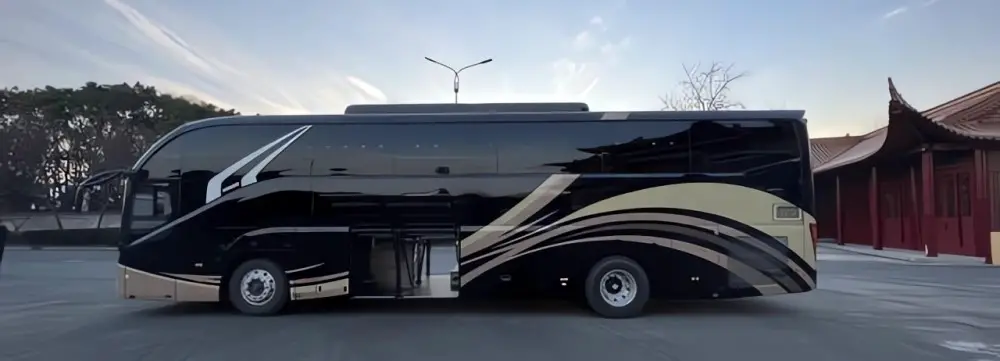
Features of Small Class A Motorhomes
While condensed in exterior size, small Class A motorhomes contain all the stellar amenities and luxurious finishes their larger counterparts are revered for. Creative layouts and space-saving designs expertly maximize limited square footage. These miniature mansions on wheels truly encapsulate supreme luxury in compact forms.
Some notable features that define small Class A RVs include:
Interior Design
The interior floorplans of small Class As showcase clever solutions to provide residential-style living quarters in tight footprints. Light and bright open concepts keep the interior feeling airy and spacious.
Strategic placement of slide-out room extensions side-to-side or front-to-back maximize living space. Some models incorporate up to three slide-outs to dramatically expand roominess when parked. Slide outs add several feet of width allowing fuller galleys, sitting areas, wardrobes and king beds.
Convertible furnishings let owners customize living space for different needs. Dinette benches flip up or drop down into extra beds. Swivel cab seats rotate to become part of the lounge layout. Flip-up counters, pop-out nightstands and expandable tables only take up room when needed.
Storage is amplified by “basement” compartments under slide-outs accessible from outside. Cabinets extend to the ceiling to fully utilize vertical space. Pocket doors, curved cabinetry and wall cutaways provide an open, elegant feel even in confined dimensions. Carefully placed lighting highlights and brightens.
Engine and Performance
Despite compact size, small Class A motorhomes deliver impressive power, drivability and efficiency through intelligent engineering. Potent yet fuel-efficient diesel engines generate ample torque for traveling with a full load. Many have diesels around 300 HP, however slide sizes offer 350 HP or more for extra power while retaining fuel economy.
A shorter wheelbase combined with specially designed steering and suspension provides tighter turning radiuses and improved maneuverability. Low-profile custom chassis enhance stability in crosswinds or when being passed by large trucks.
Advanced transmissions like Allison or Triton systems are tuned for smooth, dependable shifting. Chassis and suspensions are upgraded with stiffer shocks and air bags for superior ride comfort and stability. The specs all work together to deliver a well-balanced, easy driving experience despite the large size.
Multiple fuel tanks, some holding 100 gallons, mean expanded range for long journeys to remote areas. Streamlined exteriors further boost aerodynamics and fuel mileage.
Safety Features
With advanced automotive technology permeating the RV industry, small Class A motorhomes boast robust safety enhancements. Collision avoidance systems using radar sensors and cameras detect objects in the vehicle’s path and trigger automatic braking when needed.
Adaptive cruise control systems use the same technology to automatically adjust speeds in pace with traffic flow. Surround view camera systems give comprehensive coverage around the RV for easier maneuvering and parking.
Upgraded air disc brakes vastly improve stopping power over traditional systems. Automatic sway control detects oscillation and counteracts it by selectively braking wheels. Side airbags protect passengers in the front seats during collisions or rollovers.
High strength steel cages surround drivers and passengers for impact protection. Superior chassis insulation and fire-resistant materials prevent electrical fires.
Well-designed small Class A motorhomes truly represent luxury RVs efficiently packaged without compromising comfort or safety. Clever use of limited space allows singles or couples to responsibly rightsize into the Class A life.
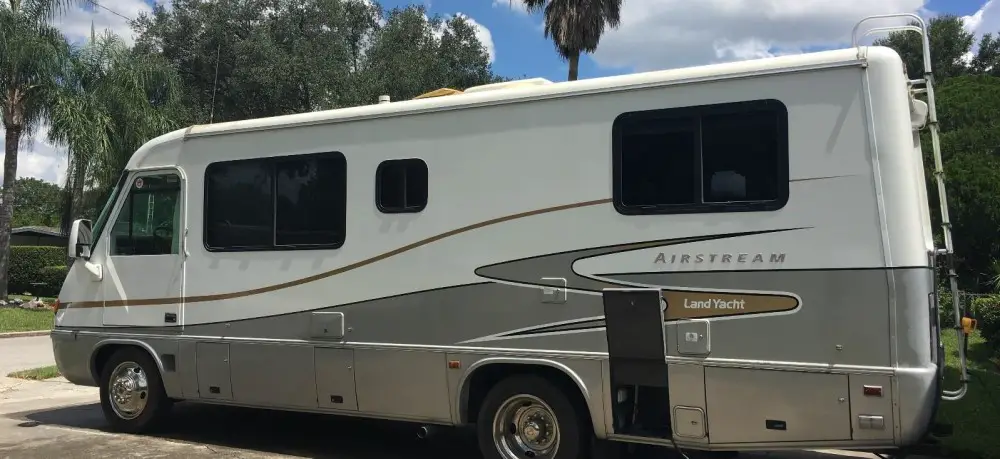
Choosing the Right Small Class A Motorhome
When shopping the small Class A category, keep these factors in mind:
Budget Considerations
Smaller Class A RVs offer some cost savings compared to largest models through:
- Lower starting MSRPs for new models, averaging $120,000-$250,000
- Potentially lower insurance premiums
- Improved fuel efficiency saving on gas costs
- Possible savings on registration fees and campground rental rates
However, small Class A prices still represent a significant investment. Realistically account for purchase price, insurance, maintenance, storage fees and other ongoing costs.
Size and Space Requirements
Consider how much living space you need for comfortable trips. Measure furniture and belongings to visualize fitting into a compressed floorplan. Lists of must-have features and options will inform the right layout.
Factor in size considerations like ease of parking, campsite access, storage at home, etc. Envision test driving and backing into spaces during a thorough RV show walkthrough.
Brand and Model Selection
Stick with proven RV manufacturers who specialize in Class A motorhomes like Winnebago, Tiffin, Newmar, and Fleetwood. Consult RV review websites and forums to research pros and cons of specific models.
Consider test driving your top choices to experience convenience factors first-hand. Favor reputable dealers who thoroughly service RVs before delivery.
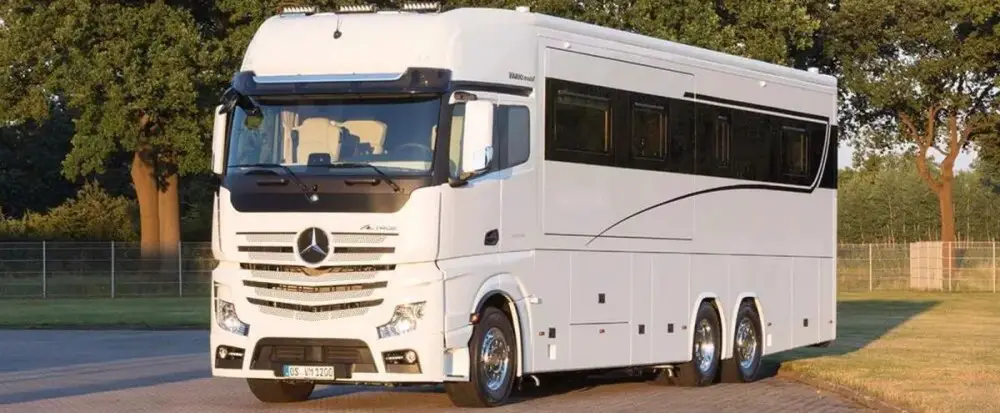
Maintenance of Small Class A Motorhomes
While small in scale, Class A motorhomes still require diligent care and maintenance:
Regular Servicing
To keep small Class A motorhomes running smoothly for years to come, diligent regular maintenance is essential. This involves taking care of the chassis, exterior, slide-outs, plumbing systems and more.
Following the commercial chassis maintenance schedule is imperative. This includes frequent engine oil and filter changes, brake inspections, tire rotations, etc. Most chassis call for full servicing every 5,000-10,000 miles depending on usage severity.
Use OEM approved engine oil for best performance and engine longevity. Have the diesel particulate filter serviced per manufacturer guidelines. Transmissions, differentials and oil bath hubs all need periodic fluid and filter changes as well.
Thoroughly flushing and sanitizing fresh water tanks between trips inhibits bacteria growth. Empty gray and black tanks completely, spray down with a sanitizing solution, then do a rinse flush before refilling. Extend hose connections and flush lines with disinfectant before disconnecting.
Carefully inspect slide-out rooms before each trip for damage and smooth operation. Check perimeter seals for cracking or gaps that could allow leaks. Lubricate slide rails and gears per OEM specifications, around every 5000 miles. Ensure slide locks are secure in transit but easily released when parked.
Caulking and sealing around windows, doors, vents, roof fixtures, storage bays, etc. should be examined at least annually. Re-seal any dried or cracked areas to prevent moisture intrusion. Use the appropriate sealant for each application. Clear self-leveling RV roof sealant works for horizontal surfaces and fixtures. Install termination bars along seal edges.
Lubricate all locks, hinges, latches and other moving parts externally and internally to keep things operating smoothly. Apply white lithium grease on slide rails and mechanisms. Lubricate window tracks and wiper spindles to prevent binding. Spray lock tumblers and deadbolt mechanisms with dry graphite lubricant.
The roof demands special care. Keep it free of debris and maintenance walkable. Inspect seals around penetrations like roof vents. Re-coat and re-seal the entire roof annually. Use a quality RV rubber roof protector system compatible with your roof type. Install a wind deflector for added protection during driving.
Staying diligent with preventative maintenance safeguards a small Class A RV’s function and value. Make regular servicing a priority to uphold performance and reliability.
Cleaning and Upkeep
Frequent cleaning and inspections are key to upholding the appearance and function of a small Class A RV. Maintaining the systems and components will also help maximize resale value down the road.
Wash and wax the exterior 2-3 times per year using RV-specific cleaners and protectants safe for the exterior materials. This clears away road grime, contaminants and oxidation. Carefully inspect the exterior for damage during cleaning.
Deep clean the interior regularly including floors, upholstery, cabinetry, appliances and storage areas. Shampoo carpets and mop hard floors. Use disinfectants on surfaces. Deodorize drapes and fabrics. Empty all interior compartments and keep them organized.
Inspect appliances for smooth operation and damage. Self-clean ovens as needed. Visually check the back of the refrigerator and freezer. Replace water filters per manufacturer instructions. Clean dryer vents and check exterior exhaust caps.
Have LP systems inspected annually by a certified technician. They should check for leaks, assess pressures, test safety devices, etc. This can identify issues before they become serious hazards.
Routinely dump, clean and sanitize gray and black tanks using commercial RV cleaning tablets made for waste tanks. These help dissolve solid buildup and deodorize. Flushing tanks regularly inhibits bacteria and odor buildup.
Generators require periodic exercising and maintenance. Run generators for 30-60 minutes under a partial load monthly to redistribute oil and fuel. Change oil and filters based on hourly usage as specified in the manual. Check fuel lines for cracking.
Long-Term Storage
When storing a small Class A RV for an extended time, special preparations are needed:
Thoroughly wash and protect the roof, exterior walls, undercarriage before storage. Wax and seal the exterior. Check for any damage or cracks needing repair before storage.
Completely sanitize and flush holding tanks. Drain fresh water tank and add RV antifreeze to pump and lines to winterize if storing in freezing temps. Dump and flush black and gray tanks with sanitizer solution.
Disconnect batteries and electronics like TVs to prevent parasitic drains. Use tire and leveling jack covers. Seal windows, vents and openings to keep out pests. Place moth balls, dryer sheets or rodent deterrent packs inside.
Consider covering with a fitted RV cover specific to your model if storing outdoors. Park on a paved surface if possible. An enclosed, climate controlled space is ideal. Use moisture absorbing products inside if humidity is an issue.
Proper winterization and storage practices will help small Class A RVs stay in good condition between travel seasons. This protects systems and the interior from damage during downtime.
Conclusion
In summary, small Class A motorhomes offer condensed versions of the supreme luxury Class A RVs embody. Their trimmed dimensions enhance maneuverability and efficiency. Clever layouts and quality materials provide comfortable accommodations and features.
For RV owners desiring uncompromised amenities without extreme length, small Class As warrant a look. Their sensibly-sized packages offer versatility for weekends or extended tours. Downsizing dimensions doesn’t mean sacrificing luxury.
Careful selection and regular maintenance helps realize the benefits. Test drives and thorough inspections ensure picking the ideal model. Small in stature but big in features, compact Class A RVs expand the possibilities for RV lovers. They provide lavish living that nimble sizes make accessible.
Frequently Asked Questions
What are the different sizes of Class A motorhomes?
Class A motorhomes typically range from 24-45 feet long. The categories are:
- Small Class A: Under 30 feet
- Medium Class A: 31-37 feet
- Large Class A: 38-45 feet
Larger “Super C” Class A models extend over 45 feet long. Widths vary from 8-8.5 feet wide on most models.
What is the smallest class A Winnebago?
The Winnebago View 24V is currently the shortest Class A model from Winnebago at just 24.8 feet long. With a Mercedes-Benz Sprinter chassis, it offers maneuverability and fuel economy in a compact form.
What are the disadvantages of a Class A motorhome?
Some potential downsides of Class A motorhomes include:
- Difficulty driving and parking due to larger sizes
- High initial purchase and maintenance costs
- Lower fuel efficiency compared to other RV types
- Restricted access to some roads and campsites
- Depreciation hits resale value of new models
What are Class A, Class B, and Class C motorhomes?
- Class A: Luxury, bus-like motorhomes built on truck or bus chassis.
- Class B: Small, camper van-style built within van frames.
- Class C: Medium motorhomes with over-cab sleepers atop van chassis.
Which are the best small Class A RVs for 2023?
Some top-rated compact Class A RVs for 2023 are:
- Thor Axis 24.1
- Winnebago View 24V
- Newmar Bay Star Sport
- Tiffin Wayfarer 24QW
- Coachmen Galleria 24A
- Fleetwood Discovery LXE 24H
What are some of the best Class C RV brands?
Top Class C RV manufacturers include Thor Motor Coach, Winnebago, Jayco, Forest River, Coachmen, and Gulf Stream. Within those brands, popular Class C models are the Winnebago View, Jayco Greyhawk, and Thor Four Winds.




